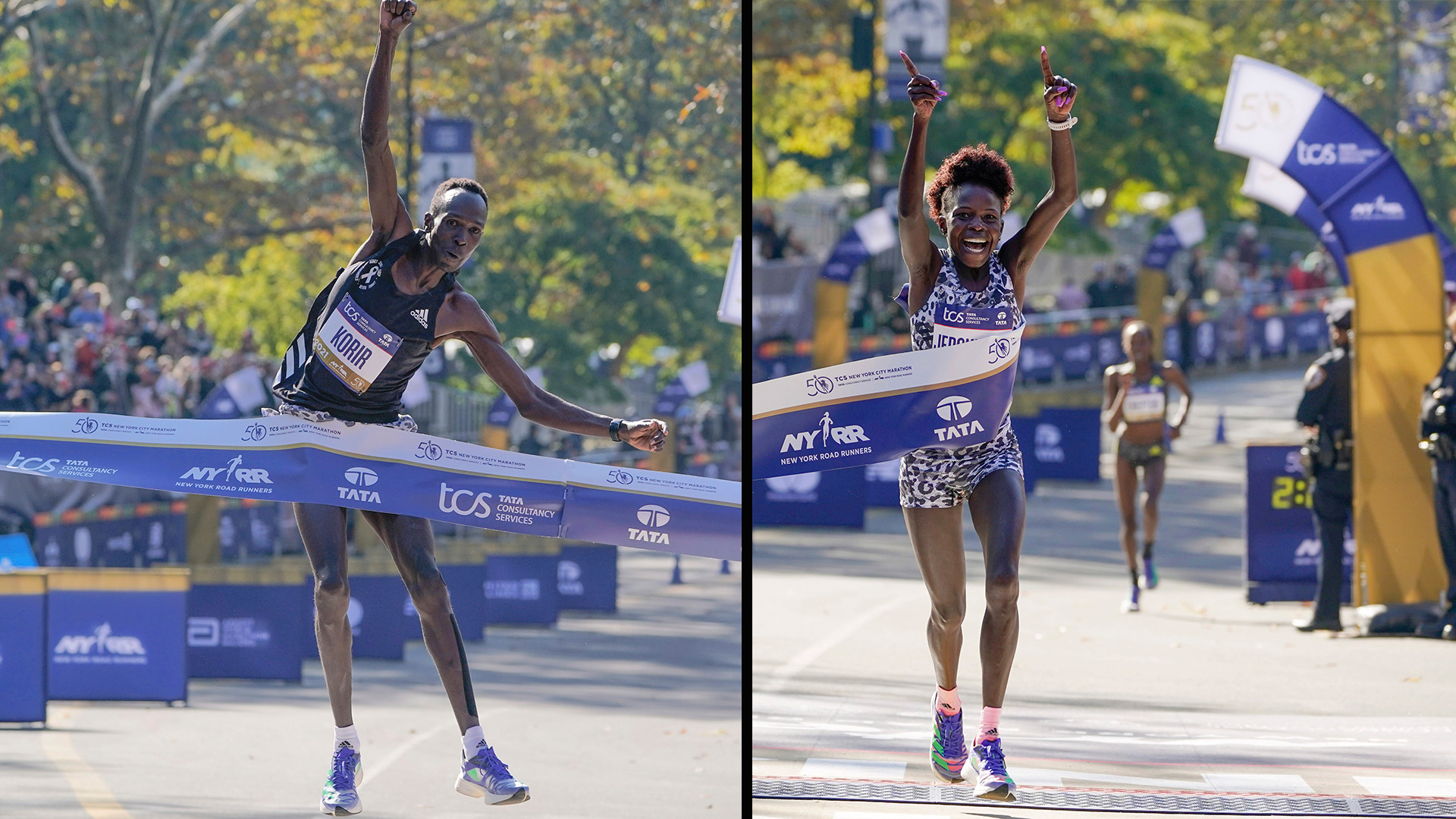Home>Misc>Featured>How To Stop Breakthrough Bleeding After Exercise


Featured
How To Stop Breakthrough Bleeding After Exercise
Published: September 30, 2023
Learn effective techniques to prevent breakthrough bleeding after exercise. Discover how Featured exercises can help you overcome this common issue.
Introduction
Welcome to our informative guide on how to stop breakthrough bleeding after exercise. Breakthrough bleeding, also known as spotting, is a common concern for many women who engage in physical activities. It refers to the unexpected bleeding or spotting that occurs outside of a woman’s regular menstrual cycle. While occasional spotting may not be a cause for alarm, persistent or excessive breakthrough bleeding can be disruptive and frustrating.
Understanding the causes and learning how to prevent breakthrough bleeding after exercise can help you maintain a healthy menstrual cycle and continue your fitness routine without interruption.
In this article, we will explore the possible causes of breakthrough bleeding after exercise and provide you with practical tips to help you manage and prevent it. Whether you are an athlete, fitness enthusiast, or are simply looking for ways to stay active while dealing with breakthrough bleeding, this guide is for you.
It’s important to note that while we strive to provide accurate and up-to-date information, it’s always recommended to consult with your healthcare provider for personalized advice based on your unique situation.
Now, let’s dive into the details and learn how to tackle breakthrough bleeding after exercise effectively!
What is Breakthrough Bleeding?
Before we delve into the causes and solutions, let’s first understand what breakthrough bleeding is. Breakthrough bleeding is vaginal bleeding or spotting that occurs outside of your regular menstrual cycle. It can vary in intensity, ranging from light spotting to heavier bleeding, and can be accompanied by abdominal cramps or discomfort.
Breakthrough bleeding can be concerning, especially if you’re unsure why it’s happening. It’s important to remember that breakthrough bleeding is not the same as your regular period. It typically occurs in between your menstrual cycles and can last for a few days or even a few weeks.
There are several factors that can contribute to breakthrough bleeding, including hormonal imbalances, contraceptive methods, and underlying health conditions. In the context of exercise, the physical stress and strain on your body can also trigger breakthrough bleeding.
It’s essential to differentiate breakthrough bleeding from other types of bleeding, such as implantation bleeding or ovulation bleeding. Implantation bleeding refers to light spotting that may occur when a fertilized egg attaches itself to the lining of the uterus. Ovulation bleeding, on the other hand, is light bleeding that can occur during ovulation.
Now that we have a clear understanding of what breakthrough bleeding is, let’s explore the possible causes of breakthrough bleeding after exercise.
Causes of Breakthrough Bleeding After Exercise
Breakthrough bleeding after exercise can be attributed to various factors, both physiological and lifestyle-related. Understanding these causes can help you pinpoint the underlying reason and take appropriate steps to manage or prevent it.
1. Hormonal Imbalances: Fluctuations in hormone levels, specifically estrogen and progesterone, can disrupt the regular menstrual cycle and lead to breakthrough bleeding. Intense exercise can affect hormone production, leading to hormonal imbalances and abnormal bleeding.
2. Increased Uterine Blood Flow: Physical exercise increases blood flow to the uterus, causing the blood vessels in the uterine lining to expand. This increased blood flow can result in breakthrough bleeding.
3. Ovulation: Some women may experience breakthrough bleeding during ovulation. The release of the egg from the ovary can cause slight hormonal changes and lead to spotting, especially when combined with exercise.
4. Trauma or Injury: Vigorous exercise or high-impact activities can place stress on the pelvic region, potentially causing trauma or injury to the reproductive organs. This can result in breakthrough bleeding.
5. Contraceptive Methods: If you’re using hormonal birth control methods, such as the pill, patch, or intrauterine device (IUD), breakthrough bleeding may occur as your body adjusts to the hormones. Additionally, missing doses or inconsistent use of contraceptives can contribute to breakthrough bleeding.
6. Underlying Health Conditions: Certain medical conditions, such as polycystic ovary syndrome (PCOS), endometriosis, uterine fibroids, or pelvic inflammatory disease (PID), can lead to irregular bleeding, including breakthrough bleeding after exercise.
7. Stress and Emotional Factors: Stress and emotional factors can impact your menstrual cycle and contribute to breakthrough bleeding. Intense exercise combined with emotional stressors can disrupt hormone levels and trigger bleeding.
It’s important to note that breakthrough bleeding can vary in severity and duration. While occasional spotting may be normal, persistent or heavy bleeding should be evaluated by a healthcare professional to rule out any underlying health concerns.
Now that we’ve explored the possible causes of breakthrough bleeding after exercise, let’s move on to practical tips for preventing and managing this issue.
Tips to Stop Breakthrough Bleeding After Exercise
Experiencing breakthrough bleeding after exercise can be frustrating and disruptive to your fitness routine. Fortunately, there are practical steps you can take to manage and prevent this issue. Here are some tips to help you stop breakthrough bleeding after exercise:
- Take Breaks and Pace Yourself: Overexertion can put excessive stress on your body and contribute to breakthrough bleeding. Take regular breaks during your exercise sessions and listen to your body’s signals to avoid pushing yourself too hard.
- Ensure Proper Warm-up and Cool-down: Implementing a thorough warm-up and cool-down routine helps prepare your body for exercise and minimizes the risk of breakthrough bleeding. Engage in gentle stretching exercises that focus on the pelvic region to improve circulation and reduce strain on the reproductive organs.
- Use the Right Protection: If you’re experiencing breakthrough bleeding during exercise, ensure you’re using the appropriate protection, such as panty liners or menstrual cups, to manage any spotting or light bleeding. This can help you feel more comfortable and confident during your workout.
- Optimize Your Nutrition: A balanced diet and proper nutrition can play a significant role in regulating your menstrual cycle. Ensure you’re consuming enough nutrients, including iron and vitamin C, to support healthy blood flow and reduce the risk of breakthrough bleeding.
- Pay Attention to Hormonal Birth Control: If you’re using hormonal birth control methods, consult with your healthcare provider regarding breakthrough bleeding. Adjustments to the type or dosage of contraception may help alleviate the issue. Consistent and correct use of contraceptives is also crucial in preventing breakthrough bleeding.
- Stay Hydrated: Drinking an adequate amount of water before, during, and after exercise is essential for overall health, and it can also help regulate your menstrual cycle. Proper hydration supports healthy blood flow and can contribute to reducing breakthrough bleeding.
- Consult Your Healthcare Provider: If breakthrough bleeding persists or is accompanied by severe pain or other concerning symptoms, it’s important to seek guidance from your healthcare provider. They can evaluate your specific situation and provide personalized advice and potential treatment options.
Remember, every person’s body is unique, and what works for one may not work for another. It may take some trial and error to find the strategies that best suit you. Patience and consistency are key when implementing these tips.
By following these practical tips, you can take steps towards managing and preventing breakthrough bleeding after exercise, allowing you to continue your fitness journey with confidence and ease.
Take Breaks and Pace Yourself
When it comes to preventing breakthrough bleeding after exercise, taking breaks and pacing yourself is crucial. Overexertion and pushing your body too hard can increase the risk of hormonal imbalances and physical strain, leading to breakthrough bleeding. Here are some key points to consider:
Listen to Your Body: Pay attention to how your body feels during exercise. If you start feeling excessively fatigued, lightheaded, or experience any unusual discomfort, it’s important to take a break and rest. Pushing through intense physical activity when your body is signaling to slow down can disrupt your menstrual cycle and trigger breakthrough bleeding.
Plan Rest Days: Incorporating regular rest days into your exercise routine is essential for allowing your body to recover. Rest days provide an opportunity for your hormonal levels to stabilize and reduce the risk of breakthrough bleeding. Consider alternating between high-intensity workout days and lighter activity or rest days to avoid overexertion.
Modify Your Exercise Intensity: If you regularly engage in high-intensity workouts, it may be beneficial to modify the intensity during times when breakthrough bleeding becomes an issue. For example, instead of running at maximum speed, try a moderate pace or opt for low-impact exercises such as swimming or yoga. Gradually increase the intensity as your body adjusts and the breakthrough bleeding subsides.
Divide Exercise Sessions: If experiencing breakthrough bleeding during longer exercise sessions, consider breaking them up into shorter, more manageable sessions throughout the day. This approach can help minimize the strain on your body and reduce the risk of breakthrough bleeding.
Monitor Your Heart Rate: Keeping track of your heart rate during exercise can help gauge the intensity level. Ideally, aim to maintain your heart rate within an appropriate range for your fitness level. This can help prevent excessive stress on your body, hormonal fluctuations, and subsequent breakthrough bleeding.
Engage in Low-Intensity Exercises: On days when breakthrough bleeding is more prevalent, opting for low-intensity exercises can be beneficial. Low-impact activities such as walking, cycling, or gentle stretching can still provide health benefits without putting excessive strain on your body.
Remember, it’s essential to find the right balance between pushing yourself to improve your fitness level and listening to your body’s needs. The goal is to engage in regular exercise without compromising your hormonal balance or triggering breakthrough bleeding.
By taking breaks and pacing yourself during your workouts, you can reduce the risk of breakthrough bleeding and maintain a healthy exercise routine.
Ensure Proper Warm-up and Cool-down
Proper warm-up and cool-down routines before and after exercise are essential for preventing breakthrough bleeding. These routines help prepare your body for physical activity and minimize the risk of strain or injury that can contribute to breakthrough bleeding. Here’s what you need to know:
Benefits of Warm-up: A thorough warm-up session before exercise helps increase blood flow to your muscles and tissues, which improves flexibility and prepares your body for physical exertion. When it comes to preventing breakthrough bleeding, warming up helps minimize the stress on your reproductive organs and reduces the risk of strain or trauma.
Dynamic Stretches: Incorporate dynamic stretches into your warm-up routine. These stretches involve controlled movements that gently stretch your muscles and improve circulation. Focus on pelvic stretches, including hip circles and gentle side-to-side movements, to enhance blood flow to the reproductive organs.
Gradually Increase Intensity: During your warm-up, gradually increase the intensity of your movements to prepare your body for more vigorous exercise. Start with low-intensity activities such as brisk walking or light jogging before progressing to the main part of your workout. This gradual increase helps prevent sudden shifts in blood flow and hormonal imbalances that can lead to breakthrough bleeding.
Importance of Cool-down: After completing your workout, take the time to cool down properly. Cooling down allows your heart rate and breathing to return to their normal levels gradually. This gradual decrease in intensity helps normalize hormone levels and reduce the risk of breakthrough bleeding.
Static Stretches: Incorporate static stretches into your cool-down routine. These stretches involve holding a pose for 20-30 seconds to improve muscle flexibility and prevent post-exercise muscle tightness. Include stretches that target the lower body, pelvic area, and lower back to enhance circulation and minimize strain on the reproductive organs.
Hydration: Remember to hydrate during your warm-up and cool-down periods. Proper hydration supports healthy blood flow and helps regulate your menstrual cycle. Drinking water before, during, and after exercise helps maintain optimal fluid balance and reduces the risk of breakthrough bleeding.
Proper warm-up and cool-down routines are essential components of any exercise session. They optimize your body’s readiness for physical activity and minimize the risk of breakthrough bleeding. Implementing these routines consistently can help you maintain a healthy menstrual cycle and enjoy a more effective and enjoyable workout experience.
Use the Right Protection
When dealing with breakthrough bleeding after exercise, using the right protection is crucial to help manage any spotting or light bleeding. Choosing the appropriate protection can provide comfort and confidence during your workouts. Here’s what you need to know:
Panty Liners: Panty liners are thin absorbent pads designed to provide light protection against spotting. They can be useful during exercise when breakthrough bleeding is minimal. Panty liners are discreet and can help you feel more comfortable and confident during your workout.
Menstrual Cups: Menstrual cups are a popular alternative to traditional pads or tampons. Made of medical-grade silicone or latex, these cups are inserted into the vagina to collect menstrual blood. Menstrual cups offer longer-lasting protection and can be worn during exercise without the worry of leakage or discomfort.
Period Underwear: Period underwear is specially designed to provide all-day protection against menstrual flow or light spotting. These undergarments have built-in absorbent layers that wick away moisture and prevent leaks. Period underwear is a convenient option for managing breakthrough bleeding during exercise, providing comfort and peace of mind.
Choose the Right Size and Absorbency Level: It’s essential to choose the right size and absorbency level of protection based on your individual needs. Lighter flow days may require less absorbency, while heavier flow days may require more. Consider the level of breakthrough bleeding you experience during exercise and select the most suitable protection to manage it effectively.
Change Regularly: Regardless of the type of protection you choose, it’s important to change it regularly. Sweat and movement during exercise can impact the efficacy of the protection, so changing it as needed ensures you stay fresh and comfortable throughout your workout.
Experiment and Find What Works for You: Every person’s body is unique, so finding the right type of protection may involve some trial and error. Experiment with different products, sizes, and brands to find what works best for you and provides the most secure and comfortable protection during exercise.
Remember, using the right protection during exercise is essential for managing breakthrough bleeding and ensuring a comfortable and confident workout experience. Choose the option that suits your needs, provides adequate absorbency, and allows you to move freely throughout your exercise routine.
Optimize Your Nutrition
Optimizing your nutrition is an important factor in managing and preventing breakthrough bleeding after exercise. A well-balanced diet can support a healthy menstrual cycle and minimize hormonal imbalances that can contribute to spotting. Here are some tips to help you optimize your nutrition:
Ensure Adequate Nutrient Intake: Consuming a balanced diet that includes a variety of nutrient-dense foods is crucial for overall health and hormonal balance. Include foods rich in iron, such as leafy greens, lean meats, and legumes, as iron deficiency can lead to irregular bleeding.
Focus on Vitamin C: Vitamin C plays a vital role in the absorption of iron. Including vitamin C-rich foods, such as citrus fruits, berries, and bell peppers, in your diet can enhance iron absorption and support a healthy menstrual cycle.
Include Omega-3 Fatty Acids: Omega-3 fatty acids have anti-inflammatory properties that can help regulate hormonal levels and reduce inflammation in the reproductive system. Incorporate fatty fish like salmon, chia seeds, and walnuts into your meals to boost your omega-3 intake.
Maintain Stable Blood Sugar Levels: Fluctuations in blood sugar levels can impact hormone production and disrupt your menstrual cycle. To maintain stable blood sugar levels, opt for complex carbohydrates like whole grains, fruits, and vegetables, and avoid excessive consumption of refined sugars and processed foods.
Stay Hydrated: Drinking an adequate amount of water is crucial for overall health and proper bodily function, including regulating your menstrual cycle. Staying hydrated helps maintain optimal blood flow and can contribute to reducing breakthrough bleeding.
Consider Herbal Support: Some herbs, such as ginger, turmeric, and chamomile, have anti-inflammatory properties that can support hormonal balance. Including these herbs in your diet or consuming them as herbal teas may help alleviate breakthrough bleeding.
Consult with a Registered Dietitian: If you’re unsure about how to optimize your nutrition for managing breakthrough bleeding, consider consulting with a registered dietitian. They can provide personalized guidance based on your specific needs and help create a meal plan that supports a healthy menstrual cycle.
Remember, nutrition plays a significant role in overall health and can have a direct impact on your menstrual cycle. By incorporating nutrient-rich foods, staying hydrated, and maintaining stable blood sugar levels, you can support hormonal balance and minimize breakthrough bleeding after exercise.
Pay Attention to Hormonal Birth Control
Hormonal birth control methods, such as oral contraceptives, patches, or intrauterine devices (IUDs), can impact your menstrual cycle and potentially contribute to breakthrough bleeding during exercise. If you’re using hormonal birth control, it’s important to pay attention to its effect on your body and take necessary steps to manage breakthrough bleeding. Here’s what you need to know:
Consistent Use: To effectively prevent breakthrough bleeding, it’s crucial to use your chosen birth control method consistently and correctly. Missing or skipping doses can disrupt hormone levels and increase the risk of breakthrough bleeding.
Timing of Medication: Depending on the type of hormonal birth control you’re using, the timing of medication intake may be important. Follow the instructions provided by your healthcare provider or the product packaging to ensure optimal effectiveness and minimize breakthrough bleeding.
Consult with Your Healthcare Provider: If breakthrough bleeding persists or becomes a recurring issue, it’s important to consult with your healthcare provider. They can evaluate your specific situation and determine if adjusting the type or dosage of your hormonal birth control is necessary.
Consider Alternative Types of Birth Control: If breakthrough bleeding continues to be problematic, you may want to consider alternative types of birth control. Different hormonal contraceptives may have varying effects on your menstrual cycle, and finding the one that works best for you is key. Consult with your healthcare provider to explore alternative options that may better suit your individual needs.
Track Your Menstrual Cycle: Keeping track of your menstrual cycle and breakthrough bleeding episodes can help identify patterns and potential triggers. Use a menstrual cycle tracking app or keep a diary to record your experience. Sharing this information with your healthcare provider can assist in determining the most suitable solution.
Be Patient: It’s important to remember that it may take time for your body to adjust to hormonal birth control. Breakthrough bleeding could be a temporary side effect that subsides as your body adapts to the hormones. Be patient and give yourself time to adjust, but also consult with your healthcare provider if the issue persists.
Remember, the impact of hormonal birth control on breakthrough bleeding varies from person to person. By paying attention to your body’s response, following the prescribed methods, and seeking guidance from your healthcare provider, you can better manage breakthrough bleeding associated with hormonal birth control.
Stay Hydrated
Staying hydrated is essential for overall health, and it can also play a role in managing breakthrough bleeding after exercise. Proper hydration supports healthy blood flow, helps regulate your menstrual cycle, and reduces the risk of dehydration-related issues that can contribute to breakthrough bleeding. Here’s what you need to know:
Importance of Hydration: Drinking an adequate amount of water before, during, and after exercise is crucial for maintaining optimal hydration levels. When you’re properly hydrated, your blood volume remains stable, which helps ensure adequate blood flow to the reproductive organs and reduces the risk of breakthrough bleeding.
Timing of Hydration: It’s important to start hydrating before your exercise session. Aim to drink water at least 30 minutes before your workout to ensure that your body is properly hydrated. During exercise, sip water regularly to replenish the fluids lost through sweat and maintain hydration levels.
Monitor Fluid Intake: Pay attention to your fluid intake throughout the day, not just during exercise. Always carry a water bottle with you and make a conscious effort to drink water regularly. Proper hydration is not just about drinking water during exercise but maintaining hydration throughout the day.
Consider Electrolyte Balance: Electrolytes play a crucial role in maintaining fluid balance in the body. During intense or prolonged exercise, you may lose electrolytes through sweat. Consider consuming beverages or foods that contain electrolytes to help maintain the optimal balance and support hydration.
Listen to Your Body: Thirst is a reliable indicator that your body needs hydration. Pay attention to your body’s signals and drink water when you feel thirsty. Additionally, be mindful of other signs of dehydration, such as dry mouth, dizziness, or dark-colored urine, and take immediate steps to rehydrate if you experience these symptoms.
Hydration Beyond Water: While water is the best choice to hydrate your body, other fluids such as herbal tea, unsweetened fruit juices, or infused water can also contribute to your overall fluid intake. However, avoid excessive consumption of caffeinated or sugary beverages as they can dehydrate your body.
Personalize Your Hydration: Everyone’s hydration needs are different, and factors such as body weight, activity level, and climate can impact your fluid requirements. Pay attention to your body’s response to exercise and adjust your fluid intake accordingly. If you have specific concerns or medical conditions that affect your hydration needs, consult with a healthcare professional.
Staying properly hydrated is essential for regulating your menstrual cycle and reducing the risk of breakthrough bleeding. By incorporating adequate fluid intake into your daily routine and being mindful of hydration during exercise, you can support a healthy menstrual cycle and minimize the occurrence of breakthrough bleeding.
Consult Your Healthcare Provider
If you’re experiencing persistent or concerning breakthrough bleeding after exercise, it’s important to consult with your healthcare provider. They can provide professional guidance, evaluate your specific situation, and help determine the underlying causes and appropriate solutions. Here’s why consulting your healthcare provider is crucial:
Personalized Assessment: Your healthcare provider will conduct a personalized assessment of your medical history, including any underlying health conditions or medications that may contribute to breakthrough bleeding. This assessment will guide them in providing tailored advice and recommendations.
Diagnosis of Underlying Issues: Breakthrough bleeding can sometimes be a symptom of underlying health conditions, such as polycystic ovary syndrome (PCOS), endometriosis, or uterine fibroids. Your healthcare provider can help diagnose and manage these conditions to alleviate breakthrough bleeding symptoms.
Review of Medications and Birth Control Methods: Your healthcare provider will review any medications you are taking, including hormonal birth control methods, and assess whether they may be contributing to breakthrough bleeding. They can suggest adjustments or alternative options to better suit your needs.
Addressing Nutritional Concerns: If your breakthrough bleeding is related to nutritional deficiencies or imbalances, your healthcare provider can provide guidance on how to optimize your nutrition to support a healthy menstrual cycle and minimize breakthrough bleeding.
Monitoring Hormone Levels: In some cases, your healthcare provider may recommend hormone level testing to evaluate any imbalances that could be causing breakthrough bleeding. This testing can provide valuable insights into your hormonal status and guide the development of an effective treatment plan.
Exploration of Treatment Options: Based on your specific situation, your healthcare provider can discuss potential treatment options to manage breakthrough bleeding. This may include adjusting medication dosages, trying different types of birth control, or exploring alternative therapies to regulate your menstrual cycle.
Addressing Overall Female Health: Consulting with your healthcare provider allows for a comprehensive evaluation of your overall female health. They can address any other concerns or questions you may have related to your menstrual cycle, reproductive health, or exercise routine.
Remember, your healthcare provider is the best resource for accurate medical advice and personalized recommendations. They have the knowledge and expertise to help identify the root cause of your breakthrough bleeding after exercise and develop an appropriate treatment plan that aligns with your specific needs and goals.
Conclusion
Breakthrough bleeding after exercise can be a common and frustrating issue for many women. However, with the right strategies and information, it is possible to manage and minimize this occurrence. Listening to your body, taking breaks, pacing yourself, and ensuring proper warm-up and cool-down routines are essential in preventing breakthrough bleeding. Using the right protection, optimizing your nutrition, staying hydrated, and paying attention to your hormonal birth control are important factors to consider as well. Consulting with your healthcare provider is crucial for personalized assessment, diagnosis of any underlying issues, and exploration of treatment options.
It’s important to remember that every woman’s body is unique, and finding the strategies that work best for you might require some trial and error. Patience and consistency are key, as managing and preventing breakthrough bleeding may take time and adjustments. By incorporating these tips into your exercise routine and lifestyle, you can maintain a healthy menstrual cycle and continue enjoying the benefits of regular physical activity.
While this article provides valuable information and suggestions, it is always recommended to consult with your healthcare provider for personalized advice based on your individual circumstances. Your healthcare provider can offer specific guidance tailored to your needs and help ensure your overall well-being.









